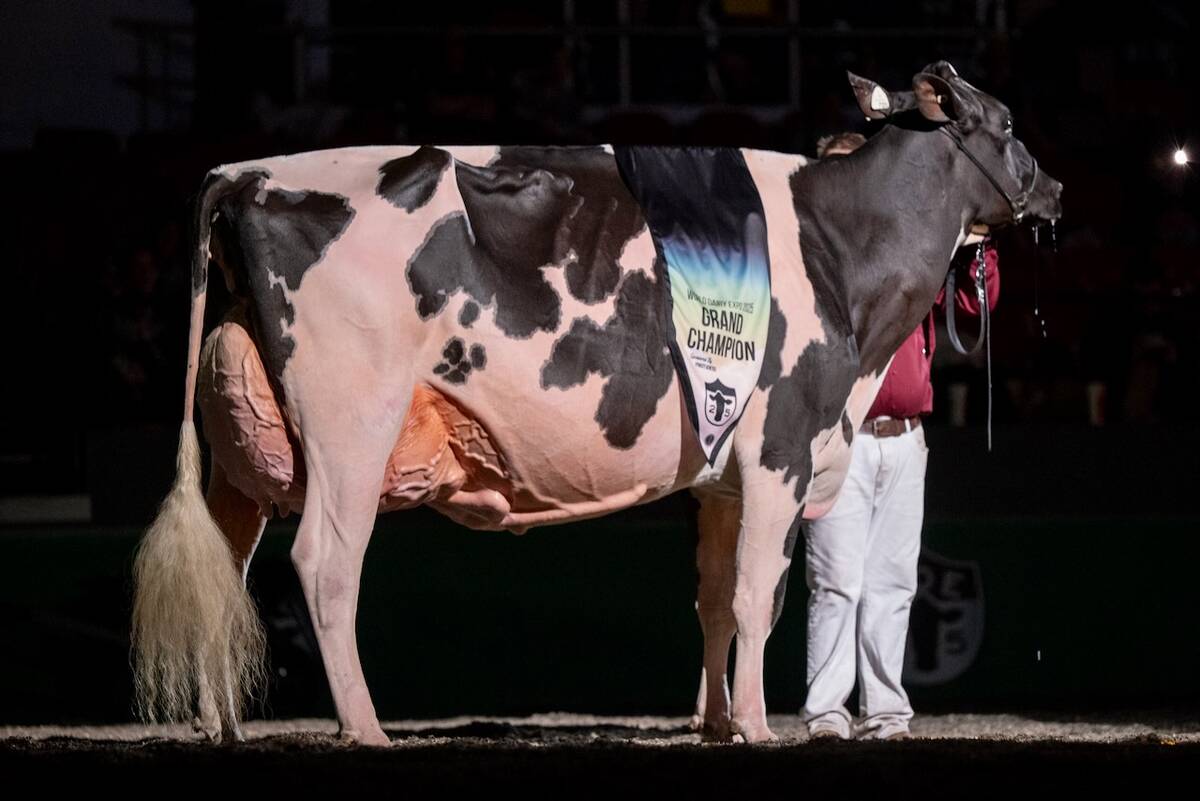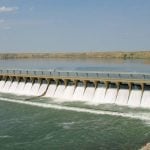Nutrition | Potassium levels in forages high this year, says Alta. official
Cows can collapse for a number of reasons, but this year high levels of potassium in hay may be the culprit.
A veterinarian should be called when a cow goes down so that a proper diagnosis can be made because it could be an injury, illness or a feed deficiency, said Gerald Hauer, Alberta’s provincial veterinarian.
“There are a number of reasons a cow can go down and you need to have somebody out there to figure it out for you,” he said.
In the case of too much potassium, the cow may appear stiff legged or stagger and then go down and not get back up. A vet can take a blood sample and recommend corrections if the cow has a mineral imbalance.
Read Also

Canadian-bred cow wins World Dairy Expo Holstein show
A cow bred in Saskatchewan, Lovhill Sidekick Kandy Cane, is the Grand Champion Holstein at the 2025 World Dairy Expo.
“Most cases tend to be quite treatable,” Hauer said.
“The problem is complications if she has been down for awhile because they start to get muscle damage.”
Producers can work with a nutritionist to provide supplements of magnesium oxide and limestone if feed has too much potassium and low levels of calcium and magnesium.
A higher than normal number of reports of winter tetany are coming in from northeastern Alberta and northwestern Saskatchewan, where moisture conditions were high before the first cut of hay was taken last summer, said Alberta livestock specialist Barry Yaremcio.
“The wet spring, the high moisture conditions we had in a lot of the soils in parts of the prairie provinces, that is contributing to the problem,” he said.
Higher than normal potassium levels in forages, especially alfalfa-grass hay, have been detected in the 2.5 to 3.5 percent range over the last four or five months.
Test results indicate potassium levels in mixed hay are almost twice as high as the long-term average.
“If you don’t have your feeds tested, it is something that should be done,” Yaremcio said.
“Once you get in the range of two and a half to three and a half percent, that is when the warning bells start going off and being cautious about downer cows with winter tetany and milk fever.”
Winter tetany is caused by lower than average magnesium levels and occurs when cows eat forages with low levels of magnesium or good feed with high levels of potassium. High levels of potassium affect cows’ ability to absorb magnesium and calcium.















